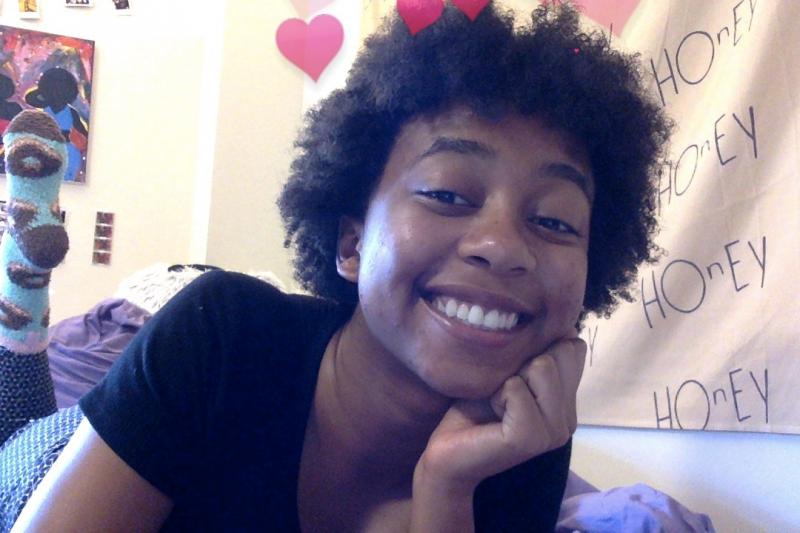To prevent students from getting lost in the sheer size and complexity of this environment, the Graduate program works hard to create a sense of community for our students. Many faculty work closely with LL.M.s and S.J.D.s alike, dedicated to helping them reach their full academic potential. The Bard Prison Initiative, which has 300 students enrolled across New York state, reports that less than 2% of its formerly imprisoned students return to prison. By comparison, nearly 68 out of. Harvard University's YouTube channel shares video content about life and learning that takes place here on campus and around the world. Harvard is devoted to excellence in teaching, learning,.
Harvard’s most popular course was a class on how to be happier.
The International Asian Students Group is offered by Wenhui Yang, LMHC, as a confidential and safe space to connect with other Asian international students during these challenging times. Even without a pandemic, academic and student life can be challenging! It can also be very rewarding. 357 Followers, 207 Following, 100 Posts - See Instagram photos and videos from UBC MIND (@mindexperiences).
Dr. Tal Ben-Shahar taught Harvard University’s most popular course (in the Spring of 2006): a course on Positive Psychology; that is, he taught his students how to be happy.
The course, called PSY 1504 – Positive Psychology, was described as follows:
“The course focuses on the psychological aspects of a fulfilling and flourishing life. Topics include happiness, self-esteem, empathy, friendship, love, achievement, creativity, music, spirituality, and humor.”
Wouldn’t you have signed up for that course? I know I would have.
Fortunately, this very-sought-after lecturer has authored two fabulous books on happiness based on his lectures: “Happier: Learn the Secrets to Daily Joy and Lasting Fulfillment” and “The Pursuit of Perfect: How to Stop Chasing Perfection and Start Living a Richer, Happier Life”. So now we all have access to his lectures at Harvard.
Here’s Dr. Ben-Shahar’s philosophy in a nutshell: “When you learn how to live for today and for tomorrow at the same time, you learn how to balance your immediate personal needs with long-term goals and enjoy life as you never have before.”
Read on to discover how you, too, can be happy.
Positive Psychology
Positive psychology is “the scientific study of optimal human functioning” and was first introduced as a field of study by Dr. Martin Seligman in 1998, when he was President of the American Psychological Association. Dr. Seligman is the Director of the University of Pennsylvania’s Positive Psychology Center and was one of the experts featured in Time Magazine’s January 2005 issue devoted entirely to “The Science of Happiness”.
While psychology has traditionally concerned itself with what ails the human mind–such as anxiety, depression, neurosis, obsessions, paranoia, and delusions–, Dr. Seligman and other pioneers in positive psychology asked the following question: “What are the enabling conditions that make human beings flourish?”
The underlying premise of positive psychology is that you can learn to be happier just as you can learn a foreign language or to be proficient at golf. This rapidly growing field is shedding light on what makes us happy, the pursuit of happiness, and how we can lead more fulfilling, satisfying lives. Dr. Ben-Shahar is well known around the world for his work in positive psychology.
Eleven Happiness Tips From Dr. Ben-Shahar

“Attaining lasting happiness requires that we enjoy the journey on our way toward a destination we deem valuable. Happiness, therefore, is not about making it to the peak of the mountain, nor is it about climbing aimlessly around the mountain: happiness is the experience of climbing toward the peak” – Tal Ben-Shahar
Here are eleven of Dr. Ben-Shahar’s happiness tips from his book “Happier”:
1. Ask yourself questions to foster awareness about what actions and attitudes will make you happier. Dr. Ben-Shahar offers several examples in his book “Happier”–which also functions as a workbook–such as the following:
Complete the following sentence: “To bring five percent more happiness into my life . . .”
2. Happiness must combine both pleasure and meaning, providing both present and future gain. To further illustrate this point, Ben-Shahar uses a hamburger analogy. He explains how certain things, like an unhealthy but tasty hamburger, will bring immediate short-term pleasure but have the opposite effect on our long-term feelings.
Similarly, an unappealing but healthy veggie burger might bring us negative emotions while we’re eating it but bring us long-term benefits. Too often people bounce back and forth between these two without finding out what things in their lives can bring both immediate and long-term happiness; that is, a meal that is both tasty and healthy.
3. Ben-Shahar argues in his book that happiness is not an end state, but rather something you work towards your whole life. Thus, you can be happier each day. Even happiness is a journey, not a destination.
4. Build happiness boosters into your life. These are things which you enjoy doing, and can include things such as having lunch with your spouse, reading a good book, taking a warm bath, engaging in a hobby you enjoy, and so on.
5. Create rituals. Dr. Ben-Shahar has the following to say about rituals: “The most creative individuals — whether artists, businesspeople, or parents — have rituals that they follow. Paradoxically, the routine frees them up to be creative and spontaneous.” One important ritual is to keep a gratitude journal. Every evening since September 19 1999, religiously, Ben-Shahar has made a list in a notebook of five things for which he feels grateful.
6. Imagine yourself as 110 years old. What advice would you give your younger self? This added perspective will allow you to recognize and eliminate the trivial and negative things from your life.
7. Allow yourself to feel the full range of emotions, including fear, sadness, or anxiety. Ben-Shahar advises that an expectation of constant happiness is unreasonable and sets us up for disappointment. A happy life will have the usual vicissitudes, and trying to avoid those, or hoping not to experience them, inevitably leads to unhappiness and frustration. A happy person has highs and lows, but their overall state of being is positive.
8. Simplify. Identify what’s most important to you and focus on that; stop trying to do too much. People who take on too much experience time poverty, which inhibits their ability to derive happiness from any of the activities they participate in.
9. Remember the mind-body connection. Regular exercise, adequate sleep, and healthy eating habits lead to both physical and mental health.
10. Keep in mind that happiness is mostly dependent on your state of mind. Barring extreme circumstances, our level of well being is determined by what we choose to focus on and by our interpretation of external events.
11. Consider happiness to be the ultimate currency. Always ask yourself what you’re trading it for.

Four Basic Archetypes
Dr. Ben-Shahar argues in “Happier” that there are four basic archetypes of happiness decision making. These are the following:
1. Hedonism. These people believe that they can sustain happiness by going from pleasurable activity to pleasurable activity with complete disregard for any future meaning or purpose.
2. Rat Race. These people are on the opposite end of the spectrum: they postpone present happiness in order to be happy in the future. They believe that reaching a certain destination will lead to sustained happiness.
3. Nihilism: These people believe that no matter what they do they will not be able to attain happiness. Basically, these are the ones that have lost all hope of being happy.
4. Happiness. As stated previously, happiness requires that we live for both today and tomorrow. These are the people who engage in activities which they find meaningful and pleasurable today, which at the same time “feed” into a future that is also meaningful and pleasurable.
How to Find Work Which Makes You Happy
Harvard University Youtube
People experience their work in one of three ways: as a job–a chore done so you can pay your bills–, as a career–motivated by money, prestige, and advancement–,or as a calling. A calling is work done as an end in and of itself.
To find your calling, first ask “What gives me meaning?”, then ask “what gives me pleasure?”, and finally ask yourself “what are my strengths?” Most job-seekers first ask what they’re good at, which then helps them generate a list from which they select the option which they perceive will bring them the most pleasure. The question of meaning somehow doesn’t make it into the equation. This is why most people end up with a job or a career instead of a calling.
Conclusion
You can watch Dr. Ben-Shahar in action in the YouTube video below:

“Many people in enlightened democracies spend much of their time feeling enslaved — not by the regime but by extrinsic factors that are self-imposed, such as prestige, a desire to please, obligation, or fear. They experience life as more or less a series of chores that they have to carry out rather than activities that they want to engage in.” – Tal Ben-Shahar

Live your best life by following Ben-Shahar’s advice.
Related Posts:
Choose from nearly 1,000 open-enrollment Harvard courses, offered at times that work with your busy schedule. No application is required.
For the 2020–21 academic year, all courses will be online.
Registration
Registration for the spring 2021 term is open until January 21. Registration for the January 2021 term is now closed. Courses fill quickly, so reserve your spot for spring soon:

Taking a Course
We offer a variety of ways for you to take courses so you can find the option that works best with your schedule. Online, on campus in the evening, at a scheduled time weekly or a bit more self-paced through the semester. Read about our various course formats.
Courses may be relocated, rescheduled, or canceled. See Enrollment Policies. Please check the website before classes begin for up-to-date classroom assignments. The campus map shows building locations.
Youtube Harvard Students Student
Our courses are taught by faculty who are Harvard scholars, industry experts, leading researchers, entrepreneurs—and instructors dedicated to their students.
Harvard Student Arrested
Faculty Insight:
